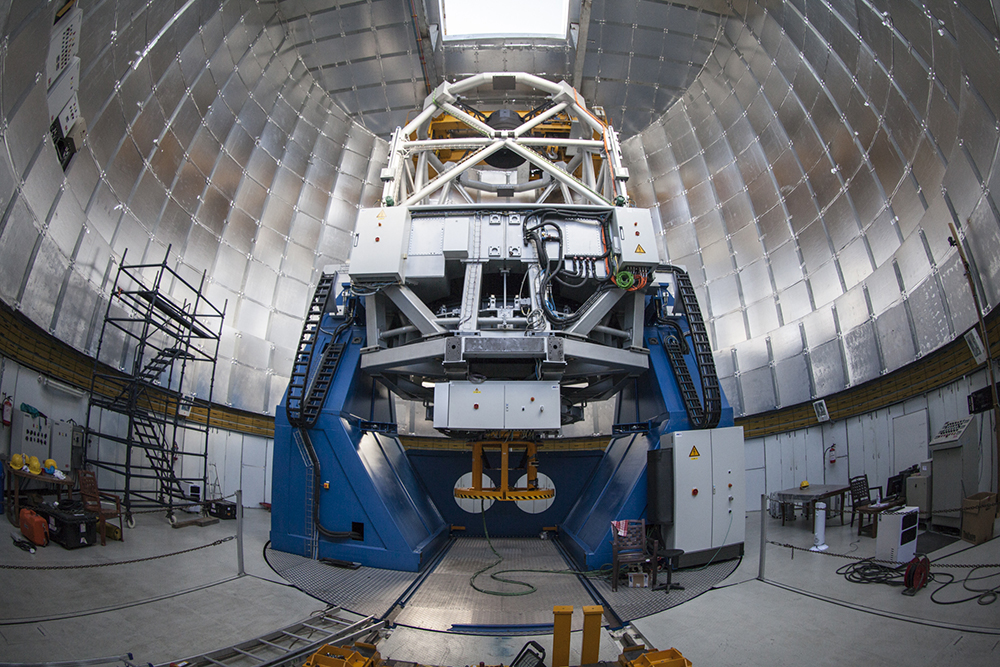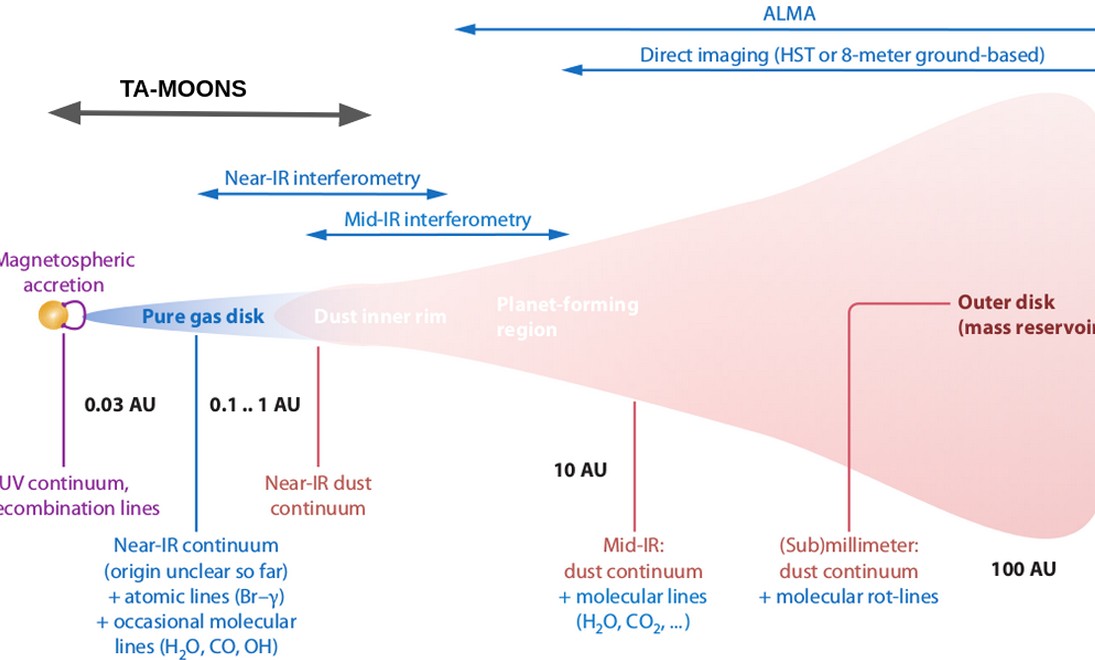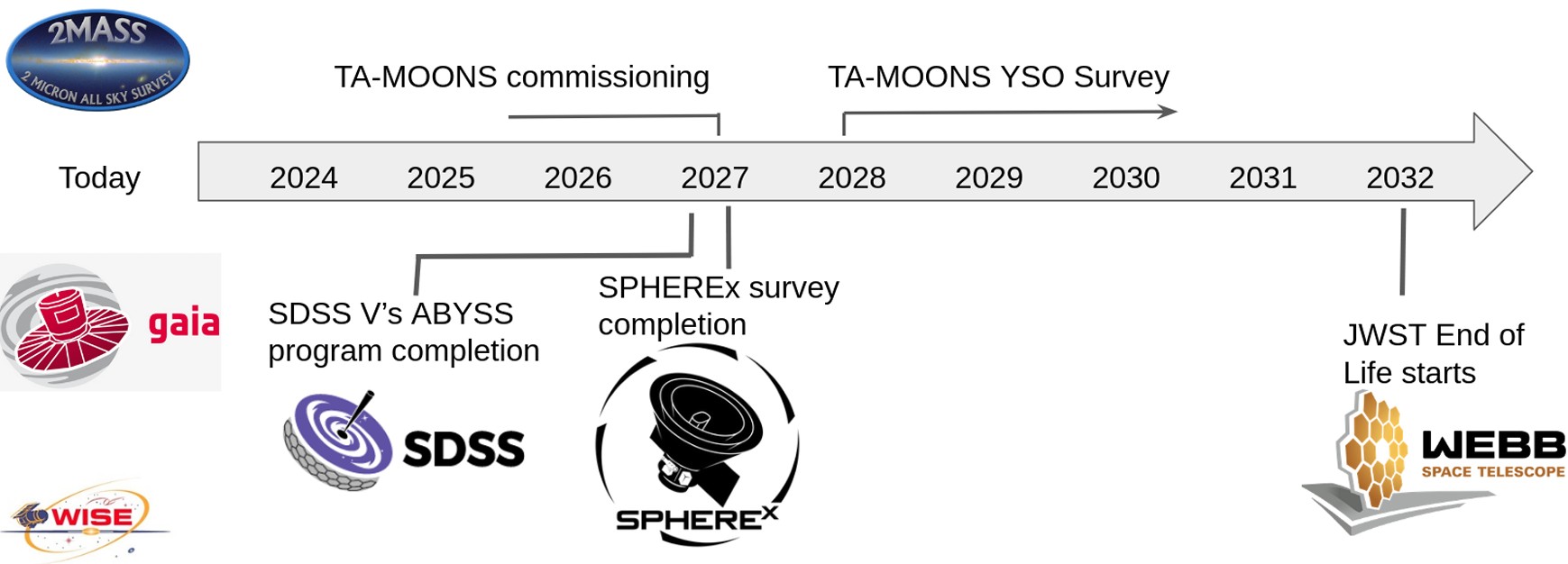About TA-MOONS

Tata Institute of Fundamental Sciences (TIFR) - Aryabhatta Research Institute of Observational Sciences (ARIES) Multi-Object Optical to Near-Infrared Spectrograph (TA-MOONS) is a proposed multi-object, medium resolution (R~2500), optical to near-infrared spectrograph (developed in-house) optimized for doing fast surveys of stellar/galaxy clusters. It is a unique instrument which is capable of packing ~8 stars sparsely spread across the Field-of-View of the ARIES 3.6 m Devasthal Optical Telescope (DOT) into a compact configuration of spectra on the optical and near-infrared detectors simultaneously. Our primary science goal is to conduct a large young stellar object (YSO) spectroscopic survey covering the entire optical to near-infrared wavelength range of 350 nm to 2.5 micron at a medium resolution of R ~ 2500. This survey will produce the largest spectral library of YSOs which will enable us to study the accretion and outflow mechanism in active protoplanetary disc systems. While this is the primary goal of the instrument, it is also a spectrograph suitable for various other science cases listed in this proposal. Especially studies of stellar and galaxy clusters, where one has to obtain spectra of multiple objects in the field. Currently, there does not exist a multi-object spectrograph which can cover this entire optical to near-infrared wavelength range simultaneously on any telescope in the world. TA-MOONS on the 3.6 m Devasthal Optical Telescope (DOT) will fill this gap with its high survey efficiency for targeted multi-object studies.
Objectives

- Spectroscopic survey of Young Stellar Objects (YSO's), galaxies and star clusters.
- Understanding the accretion physics of protoplanetary discs where to study the active inner regions of the disc, we have to observe in near-infrared or shorter wavelengths.
- Proposing to observe or survey a large number of YSOs, using Marton et al. (2019) YSO catalog with probability of YSO > 90%, J mag < 14. (To achieve reasonable S/N on a 3.5 m telescope at R~2500 ) and DEC > -30 deg (Observable declination from DOT).


Specifications
- 8 Deployable Slit Robotic Opto-Mechanical Pickup Arms with 2 Degrees of Freedom (DoF).
- Wavelength range from 0.36 μm to 2.5 μm.
- Resolution ∼ 2500 in phase 1.
- Observe ∼ 8 point sources simultaneously across a 12 arcmin Field of View (FoV).
Goals
- 100 Young Stellar Objects (YSO) spectrum/night.
- World’s largest ultra broad band spectroscopy of YSOs.
- Spectroscopic survey of YSOs, galaxies and star clusters.
Targets for the Survey
- Variable Accretion Sources (FUors/EXors).
- Targets for Viscous accretion versus Wind accretion problem.
- Inner disc metallicity estimation.
- Periodic Variable Sources (from VVV survey as well as others).
- Disc wind targets.
- Stellar flare targets.
- High mass Herbig He/Be stars.
- Low mass stars.
Current Status
- Optical design of front optics completed.
- Optical design of backend spectrograph near completion.
- Opto-mechanical design ongoing.
- Preliminary Design Report under preparation.

_0.png)